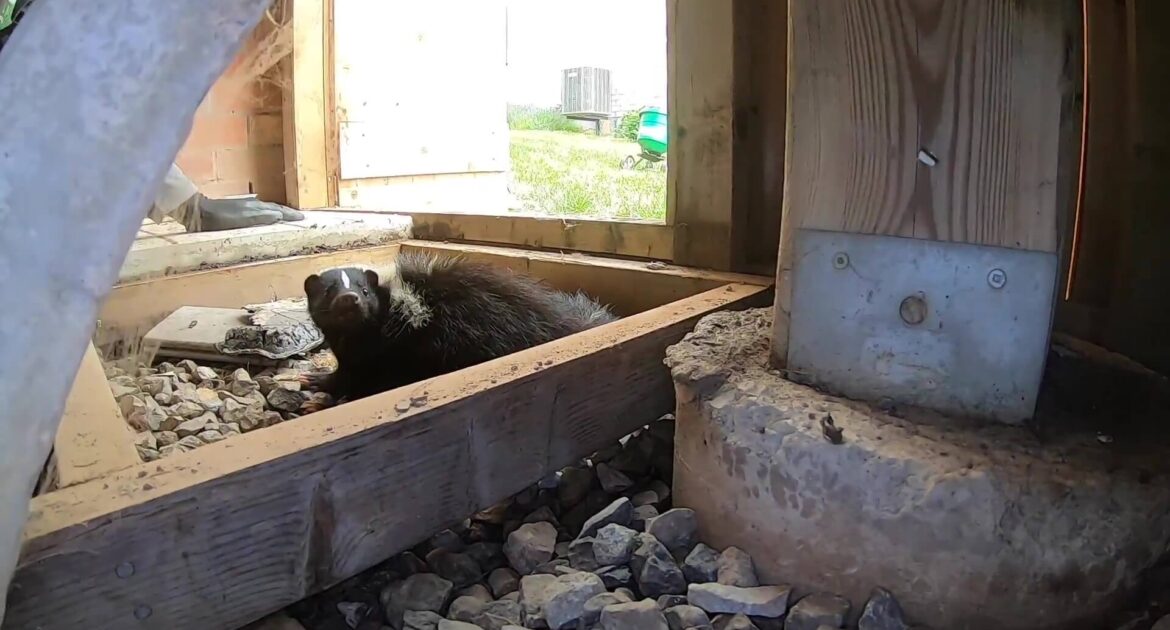While you may never actually see a skunk close up, you definitely know when one has been threatened by just one whiff of their potent and very recognizable spray. Despite the noxious odour, skunks are actually very gentle and quiet animals. Let’s get past the smell and take a deeper look to learn a little more about these elusive animals.
You Could Say They Are the Strong Silent Type
If you have ever watched the old Looney Tunes cartoons, you might remember a lovable, albeit stinky and silly skunk named Pepe Le Pew. He was the fictional French skunk who was always on the lookout for his true love. He would stop at nothing to attract the object of his desire, remaining oblivious to his off-putting scent. However, real skunks are not so forward. In fact, they are quite shy and tend to be loners except for winter months when they wander out looking for a mate and congregate for warmth.
While they do have sharp claws for digging, their only real defence against predators is their spray. It is a strong combination of sulfur compounds called mercaptan. Their glands can excrete the spray up to 15 feet, and they can direct it fairly accurately. Like tear gas, it can cause temporary blindness and vomiting in humans. It can take weeks for the smell to abate naturally.
They Can Be Very Helpful
While you may not want to get close to them, skunks can be very helpful to have around. They eat grub worms that can threaten lawns and wasps that can attack people. Farmers and gardeners can thank them for feasting on many agricultural pests that can threaten crops. Because they are naturally immune to venom, they have even been known to eat poisonous snakes like rattlesnakes.
Beware the Stripes
There are several varieties of skunks, but in the U.S. and Southern Canada, the striped skunk is by far the most common. While they look quite cute, don’t try to approach these furry guys. When threatened, they rattle their teeth, growl, spit, stomp the ground, raise their tails and curve around so that both their face and tail are pointed toward the object that they want to deter. If you see that behaviour, it is probably too late to outrun the attack.
Don’t think for a second that you are safe if you see a baby skunk. They are born with fully activated musk glands and can function just like their grown counterparts, spraying at only two weeks old. Not only that, but skunks are very territorial. You don’t stand much of a chance against a skunk when a mother is motivated to protect her young.
They Love the Nightlife
Skunks are nocturnal, coming out at night to forage for food. They prefer grassy or bushy areas instead of forests. Skunks may create a den by under buildings or porches, tree hollows, abandoned animal dens or anywhere that affords protection within two miles of a water source. Because they are nocturnal, if you see them wandering around during daylight, it is highly likely that they have rabies.
Skunks are the primary carriers of rabies in the Midwest. Rabies in skunks presents in one of two forms. One makes them very aggressive. The other makes them appear unphased by humans. Some signs that a skunk is rabid other than their appearance during the daytime include walking in circles, unsteady gait, drooling or foaming at the mouth.
Call Skedaddle for Skunk Removal in Pickering
If you’ve discovered uninvited guests under your home or in your yard, call Skedaddle Wildlife Removal today. We use only safe and humane removal and relocation methods and are approved by humane societies and SPCAs. When you need help with skunk removal in Pickering, contact us today.




